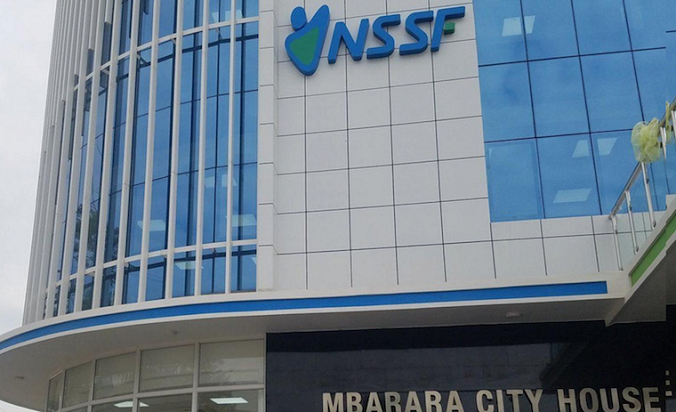The National Social Security Fund has undergone sustained uncertainty over the last few months regarding the filling of the two top managerial positions. While the public awaits the appointments, several reasons for the delay have surfaced, some confirmed by the authorities, and others not at all.
One such reason involves an alleged meeting by the officials at the Ministry of Gender, Labour and Social Development, which supervises the fund’s administrative operations, NSSF leadership, and others, at the invitation of the Operation Wealth Creation head, Gen Caleb Akandwanaho (Salim Saleh) at Kapeeka.
The views attributed to him include transforming the Fund into a source of funding for national transformation activities, beyond keeping savings for workers, especially in support of the objectives of the National Development Plans.
One direct proposal is the funding of the agriculture sector for value addition and an improved market value chain. In his view, Saleh says the current investment decisions only help the Fund to grow and the members get a good return, but that its importance does not have linkages that would help the growth of the real economy.
Specifically, according to the letter, Gen Saleh proposed last year that the NSSF releases Shillings 40 billion to build the capacity of the Grain Council of Uganda, which Richard Byarugaba, the then Managing Director, reportedly rejected.
It has now surfaced that Byarugaba rejected many proposals regarding the finances, including a six billion-Shillings request by Minister Betty Amongi to fund the sensitization, compliance, and savers mobilization drives for the Fund. She has succeeded in having the recommended reappointment of Byarugaba deferred, citing among other grounds alleged mismanagement, corruption, and insubordination.
That notwithstanding, how viable would the “Saleh proposals” be? The NSSF is the biggest financial institution in the region worth 17 trillion Shillings (4.6 billion dollars) and is free for investment in social-economic transformation, and plays a big role in the economy. Currently, NSSF’s investments are limited to real estate, stocks in limited companies, and government treasuries in the East African Community markets.
“Investment decision-making and execution is informed by the NSSF Act, the URBRA Investment Guidelines, and the internal Investments Policy,” according to the NSSF.
The Act mandates the Board to determine the Fund’s investments, while the Investments Policy provides a guiding framework for investments of the assets within acceptable risk levels.
“All monies in the fund, including the reserve account, which is not for the time being required to be applied for the purpose of the fund shall be invested in such investments as may be determined by the board in consultation with the Minister (of Finance, Planning, and Economic Development,” says the NSSF policy.
The investment decisions are made based mainly on the safety of funds and return on investment, which, according to the internal policy is maintained at 2 percentage points above the 10-year inflation average. The Fund invests mainly in 3 asset classes, with Fixed Income that involves treasury bills and treasury bonds accounting for 78 percent of the investment portfolio, followed by equities or stocks of companies with 15 percent, while real estate takes 7 percent.
Still, the investment portfolio is structured with the safety of funds and return on investment in mind, and three segments are aimed at spreading the risk to investments. The proposed plan involves “enhancing value addition in key growth opportunities, strengthening the private sector to create jobs and finance the productivity and social wellbeing of the population, and to strengthen the role of the state in guiding and facilitating development,” according to the Amongi letter.
According to the suggestion, 40 billion Shillings is equivalent to 2 percent of the total fund, and Saleh says if a significantly small portion. If the plan was to be implemented and 2 percent taken off the total asset value for ‘transformational investments’, it would be about 360 billion Shillings.
“The Fund, which currently has a balance sheet size of UGX17 trillion ($4.5 billion) can, deliberately, support initiatives needed to achieve NDP3. This can be done without jeopardizing the safety of member funds. For example, 2 percent of the 18 Trillion shillings is equivalent to 360 Billion,” the letter says.
“To ensure the safety of member funds, 98% of the assets can continue to be invested in Traditional Government Bonds, Equities, and Real estate and the 2% can be deployed systematically and Over time, on the initiatives needed to support NDP3,” he argues.
According to him, the advantage of utilizing these funds is that they form what is commonly referred to as patient capital, which is long-term and less expensive than commercial bank loans. This allows the Fund to take a long-term view of any deployment. Some experts however say that there is no need to change the operations of the Fund and where it invests the money, rather where the government invests the money that it gets from NSSF through the Bills and Bonds.
“We know that over 70 percent of the 17.9 trillion is already invested in Government of Uganda Papers and hence has been availed for the National Development Plan (NDP). The executive (government) should explain what that money has and is doing,” Economist and University Lecturer, Dr. Fred Muhumuza says.
Currently, the government owes the public and institutional investors more than 25 trillion Shillings in treasuries issued over time, while NSSF holds more than three-quarters of these. Muhumuza’s question is where all the money that NSSF, for example, has lent to the government, has been utilized so as to deserve direct investment into agriculture and processing.
“That is the problem. NSSF has invested most of its money through government borrowing and so it does not have it. Its already with Government,” he argues. According to the ‘Gen Saleh plan’, part of the investment in non-traditional initiatives would include providing catalytic support to at least 1000 start-ups by the end of the fourth National Development Plan (NDPIV) cycle.
“Globally, small and medium enterprises (SME) account for 60%-70% of formal jobs. Clearly, one of the fastest ways to create jobs is to support entities to overcome the constraints of starting and growing an enterprise,” the letter justifies.
General Saleh estimates that if half of these startups are in Agro business or light manufacturing, decent jobs created could be in excess of 250,000, which would in turn help grow the NSSF register.
By innovating and tweaking the intervention, and attracting other funding partners, he says, this program can be extended to artisans such as carpenters, and mechanics, and to community associations in both urban and rural Uganda.
“The intent is to improve the income level of these Ugandans, thereby, giving them the capacity to save with the Fund. On an overall basis, the cost of this program is low (without partners estimated at $10m or UGX 36billion), and yet the impact is great.”
He notes the importance of government programs like NAADS, Operation Wealth Creation, and others aimed at supporting agriculture, but says that the programs do not address the demand side of the sector and will not help the Parish Development Model succeed.
“The aspirations within the PDM programs will not be realized unless the market structural bottlenecks are addressed. The markets continue to be chaotically characterized by low prices, no assurances, and predictability to the farmers for their produce,” he says.
According to The Heritage Foundation, social security is a delicate industry innocent government policies can lead to their collapse, irrespective of the size of the Fund or sector. “A bigger Social Security program is not better. Instead, a more targeted program could solve Social Security’s shortfalls and increase incomes and opportunities for all. Slowly increasing the retirement age and indexing it to life expectancy, and eliminating work disincentives would protect and improve Social Security.”
This also gives savers more control over their own retirement incomes, increases incomes, and strengthens the economy. The suggestions to reform the NSSF investment framework have created anxiety amongst some savers saying that this would expose the fund to abuse.
Livingstone Mukasa, a financial expert and Chief Executive, of Four One Financial Services says there is no need to worry about the fund as long as the government remains the largest source of its revenues.
“NSSF is backed by the full faith of Government as evidenced by it investing 85% of the portfolio in Treasury Bills and Bonds, and the government is its biggest source of Revenue (Interest). Therefore, the money is safe,” he says.
-URN





